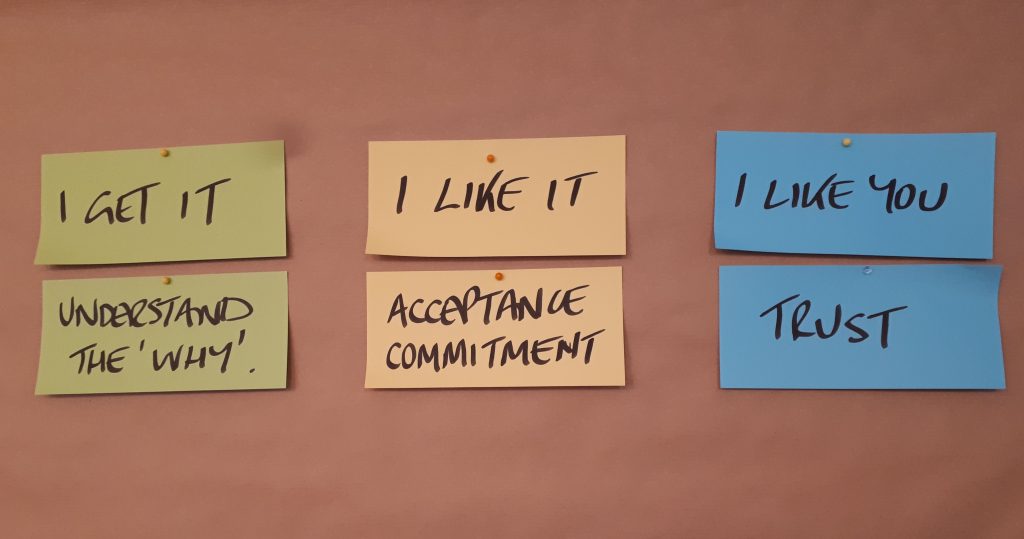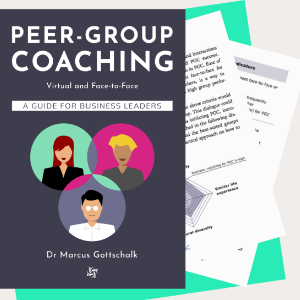
Most change initiatives die because key people were not involved to the right extent or at the right time, or because those impacted refused to accept it. At every change phase, we can experience resistance to what we’re trying to do. Rick Maurer’s levels of resistance to change allow us to better understand why our change is not progressing and what we can do about it.
From the perspective of the person in resistance, their stance is logical and natural. The value for a leader of change is in first understanding what type of resistance they are experiencing and why. Then you can adopt different tactics to channel their resistance into more constructive energy for your change project. Resistance to change is not more or less typical for one or the other person – but if as a manager you keep experiencing resistance from the same people, it’s worth asking whether it is because you leep leading them in the same way!
Resistance takes on 3 basic forms – resistance on a cognitive level, on an emotional level, or because of a lack of trust in whoever is the face of the change. Each level demands different approaches from a change leader.

Resistance level 1 “I don’t get it”
This can come from a lack of relevant information, a disagreement about the interpretation of the facts, or confusion over what the change is really about. Information overload, or information coming through too soon or through the wrong channels can also cause this resistance level. The key here is helping stakeholders understand why this change is necessary now, for example, by:
- Speaking in their ‘language’ and not always in corporate terms
- Explaining why change needs to happen before you tell them how it will happen
- Opening a two-way dialogue to answer questions and doubts
Resistance level 2 “I don’t like it”
This is an emotional reaction to the change, often stemming from a fear of loss of status or face, irritation with not being involved, or not being able to understand the complexity of a substantial change. In particular, those who have had a bad experience with change in the past will typically show this level of resistance. To make it more difficult, often in organisations leaders hear people using level 1 language to actually describe level 2 resistance. To reduce resistance at this level, it is important to openly recognise the worries of those impacted as valid and to give people time and space for an emotional reaction before expecting them to jump into action. Good tactics here to involve people early in the change early are, for examply, by:
- Exploring with them how the change can be improved
- Highlighting the benefits to them of the change
- Being honest about the difficult decisions or actions that the change will also bring.
Resistance level 3 “I don’t like you”
This is resistance at a personal level, focused on whoever is representing the change and stemming from a lack of trust in those leading the change. At this level, people could even be in agreement with the need for change, but are in reistance because of the person(s) leading the change. It might not be about ‘you’ personally, but it is targeted at you because you represent or symbolise something/-one that cannot be trusted based on past experience. The skill here is to increase the level of trust, credibility and reliability by, for example:
- Admitting past mistakes or undoing bad decisions
- Bring others on board who are in a position of trust with the stakeholders
- Show and communicate trustful actions before expecting any change in resistance
There is also what is sometimes called resistance level 0 – this simply means that that stakeholder is on board with where the change is at this moment in time. Connecting with their positive energy can help tip the scales with other important stakeholders who are more reserved in their change support.
When to use it:
- To understand why important stakeholders are not on board yet
- To define actions to win particular stakeholders at particular times in the change phases
- To create targeted communication to different stakeholder groups
Further information…

Peer-Group Coaching
Find out how to use the experience and advice of your peers to better deal with resistance to your change initiative.